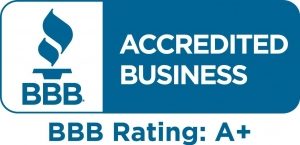The holiday season can be a time of joy, connection, and celebration, but let’s be honest: it can also be stressful. Packed schedules, endless to-do lists, family dynamics, financial strain, and the pressure to make everything “perfect” often leave us feeling stretched too thin. When stress builds up, your nervous system takes the hit, and that imbalance can ripple out to your body, mind, and spirit.
Signs Your Nervous System May Be Out of Balance
If you notice any of these signs, it could mean your nervous system is struggling to keep up:
- Anxiety, irritability, or overwhelm
- Brain fog or trouble focusing
- Difficulty falling or staying asleep
- Feeling “tired but wired”
- Digestive problems or food sensitivities
- Chronic muscle tension or pain
- Hormonal imbalances
- Frequent illness or slow recovery
When your nervous system is stressed, it shifts into fight-or-flight mode, draining energy reserves and making it harder to heal, focus, and feel at peace. Over time, this stress can disrupt digestion, weaken immunity, create hormonal imbalances, and even impact your mood and memory. The good news is, there are practical, gentle ways to restore balance and calm during this busy season.
Tips for Calming Your Nervous System
Daily Gentle Movement
Incorporating light exercise such as walking outdoors, yoga, or time on an elliptical or stationery bike can work wonders. These activities should feel nourishing instead of depleting. You should walk away feeling refreshed, not exhausted. Pairing movement with deep, diaphragmatic breathing signals safety to your nervous system and helps reset your stress response.
Grounding
Opt outside as much as you can. Spending a few minutes barefoot on grass, soil, or sand is more than relaxing. It connects you with the earth’s natural electrical energy, which can improve your circadian rhythms, improving daytime energy and night time sleep. It can also reduce inflammation, and help you feel more centered and calm.
Mindfulness Practices
Simple daily rituals such as prayer, meditation, journaling, and practicing gratitude can shift your focus from stressors to what truly matters. This is where that deep, diaphragmatic breathing can come back into play! These practices cultivate peace of mind and help your body downshift out of fight-or-flight mode.
Bioenergetic Testing
At Longevity Health Center, our Bioenergetic Evaluation service helps us create a customized protocol tailored to your unique needs. By identifying underlying imbalances, we can recommend homeopathic remedies, nutritional support, and therapies designed to restore nervous system balance and support your body’s natural healing ability.
Restorative Therapies
- Acupuncture can calm the nervous system, balance energy flow, and reduce pain and anxiety.
- Assisted Lymphatic Therapy gently stimulates lymph flow, supporting detoxification and immune function.
- Massage Therapy helps relieve chronic tension, improves circulation, and gives the body and mind a reset.
- HOCATT floods the body and it’s cells with oxygen, boosting immunity, energy, and mood.
Real-life Connection
The holidays are all about connecting with the people we love most. Spending quality time with family and friends can help buffer stress, release feel-good hormones, and remind you that you are not alone. Deep, life-giving relationships support both emotional and physical health.
Focus on the True Meaning of the Holidays
When we let go of the need to attend every event, buy all the gifts, and make everything perfect, we free ourselves to experience more joy. Focusing on gratitude, faith, connection, and meaning makes the season far more peaceful and fulfilling than any material item or party.
Adaptogenic Herbs
Adaptogens are natural substances that help the body adapt to stress, balance energy, and support resilience. Herbs such as ashwagandha, rhodiola, and holy basil can help stabilize mood, support adrenal function, and improve overall vitality. Incorporating adaptogens into your wellness routine can give your nervous system an extra layer of support during demanding seasons.
Partner with Longevity to Protect Your Nervous System This Holiday Season
The holidays do not have to leave you feeling depleted. With the right tools and support, you can stay grounded, resilient, and connected to what matters most. At Longevity Health Center, we are here to help you restore balance, protect your nervous system, and embrace the season with peace and joy. It is our mission to help you be well in mind, body, and spirit.
It would be our privilege to partner with you in creating a holiday season filled with wellness, meaning, and calm.



